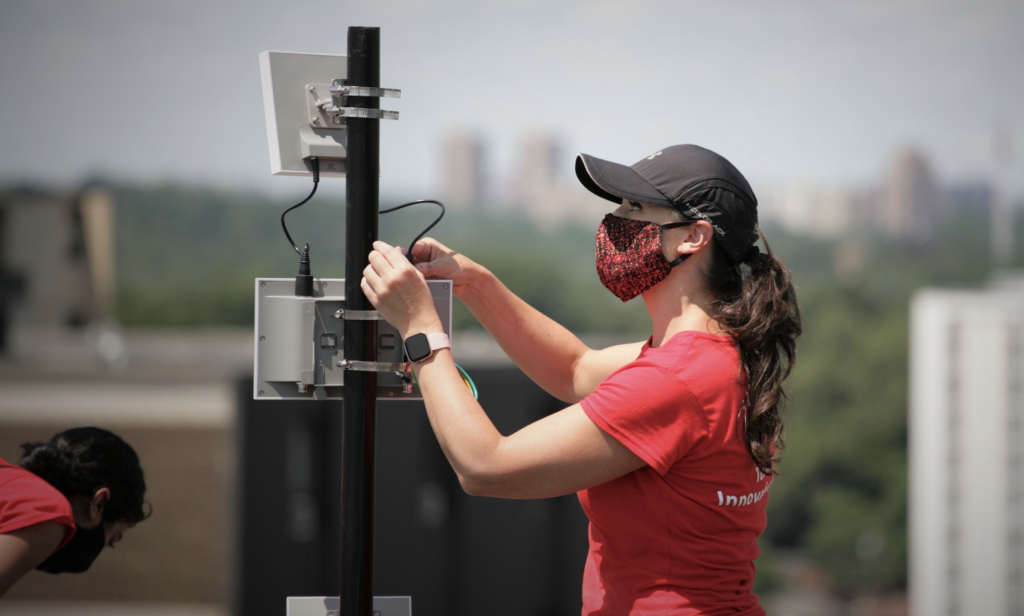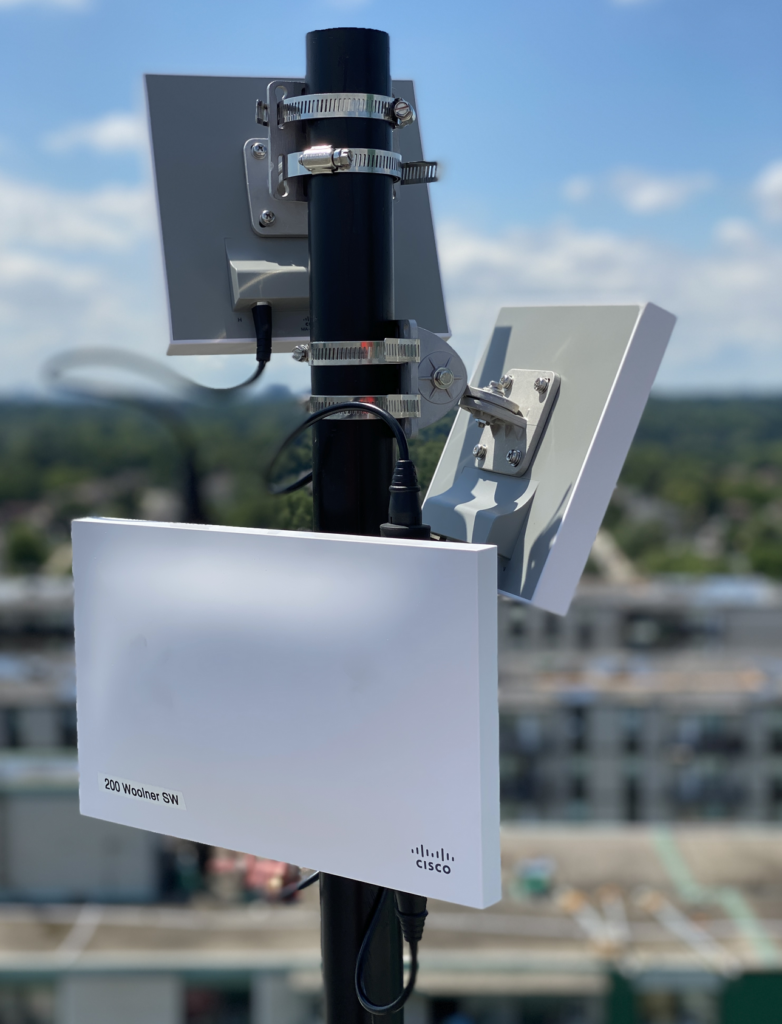
Toronto’s Digital Canopy: bridging the digital divide to create equity, inclusion and accessibility
When the COVID-19 pandemic hit, many of us were looking for some degree of normalcy to cling to, to make things feel – if only just a tiny bit – more ordinary. From staying in touch with friends and family through video calls or diving into a new series (or several) on Netflix. Others were settling into working at home, sometimes busier than before, and taking on a more active role to keep their kids engaged.
Yet, for many in our society, this transition to an online-first world wasn’t that simple. The pandemic further exposed a digital divide, intensifying the social and economic disparity between those with digital access from those without. The closure of public libraries, community centres and even neighborhood cafes, left those with no reliable internet disconnected from distance learning programs, remote work opportunities, and without access to public health information and government services.
Innovating in a pandemic
Within Cisco’s Toronto Innovation Labs, we were contemplating what exactly innovation meant in this new reality. We spend a great deal of time working with customers on co-innovation, but frankly “innovation” as we knew it wasn’t top of mind for many customers, who were now navigating major upheavals in their day-to-operations. Our team was also eager to pivot – we saw the impact this crisis was having on our communities and wanted to help.
Our conversations with the City of Toronto had started much earlier, when Lawrence Eta – the City’s Chief Technology Officer – first began to articulate a more inclusive, accessible vision for digital infrastructure in Toronto. After talking to internal teams and external partners, like Bell Canada and BAI, there was a mutual understanding for the need to come together with the City to devise a plan for a new program that would advance this vision and expand internet access in high-need communities.
Through a $1 million technology investment on behalf of Cisco, the Digital Canopy’s free WiFi hotspots would help provide inclusive and equitable access to the internet, enabling students to take part in distance learning, supporting remote work and providing access to resources for those without a stable internet connection.
The Digital Canopy takes root
 On July 24th, the first Digital Canopy site went live at 200 and 210 Woolner Avenue, enabling internet access for approximately 2,000 residents in this Rockcliffe-Smyth community. But the journey to get there wasn’t all smooth.
On July 24th, the first Digital Canopy site went live at 200 and 210 Woolner Avenue, enabling internet access for approximately 2,000 residents in this Rockcliffe-Smyth community. But the journey to get there wasn’t all smooth.
One of the key challenges was the issue of physical distancing. Our team was unable to access all locations and we couldn’t install indoor WiFi without compromising safety. That’s when the idea of connecting buildings by ceiling mounted access points arose. However, this was easier said than done. Not only did it require an internet service donated by one of our partners, Bell, but we had to creatively source power from rooftop elevator control rooms, cable closets and other safe locations.
The architecture required to run this solution frankly was an obvious choice. At Cisco we have the best in breed wireless technology – Cisco Meraki was a natural choice. We went with Cisco Meraki Wireless Access Points, along with Cisco Meraki Switching and Security. This was perfect for our needs as the simplicity of Cisco Meraki’s smart, cloud-managed solution made the installation seamless. The Access Points were easy to deploy, configure and ultimately manage from day one.
The City played a critical role working with property managers to clear the way, as did our partners Bell Canada, BAI Canada, OnX Canada, Beanfield Metroconnect, Toronto Mesh, Century Concrete Products and Southwinds Engineering Inc.
Innovation and investment that makes an impact
 This is just the start. The neighborhoods of Thorncliffe Park, West Hill, Scarborough Village and others, will also receive access under Digital Canopy. In total, there will up to 25 WiFi hotspot sites across Toronto that have the potential to connect up to 13,000 Torontonians living in low-income residential tower communities with free internet by the end of 2020.
This is just the start. The neighborhoods of Thorncliffe Park, West Hill, Scarborough Village and others, will also receive access under Digital Canopy. In total, there will up to 25 WiFi hotspot sites across Toronto that have the potential to connect up to 13,000 Torontonians living in low-income residential tower communities with free internet by the end of 2020.
The in-kind technology to expand WiFi access was made possible through Cisco’s Country Digital Acceleration (CDA) Program. The CDA has national and regional level initiatives in 36 countries around the world and is continuing to provide frontline relief and critical support to digital infrastructure during the COVID-19 global pandemic.
This grassroots effort from our Toronto Innovation Labs is just one of the ways that Cisco is helping to bridge the digital divide in Canada today. Our community investment programs, which include Cisco Networking Academy, the Connected North program, and our work with CAMH to expand virtual mental health care, have supported business continuity and empowered organizations to use technology to improve the wellbeing of their communities.
Accessible digital infrastructure is fundamental in supporting this new digital world, and the pandemic has proven the need for innovation to connect the unconnected. It’s vital that business and government continue to work together to help bridge this digital divide to build a more inclusive and equitable world.
For more on how Cisco is investing in communities to accelerate digital transformation, click here.
Tags:
1 Comments




Great initiative to help the community.